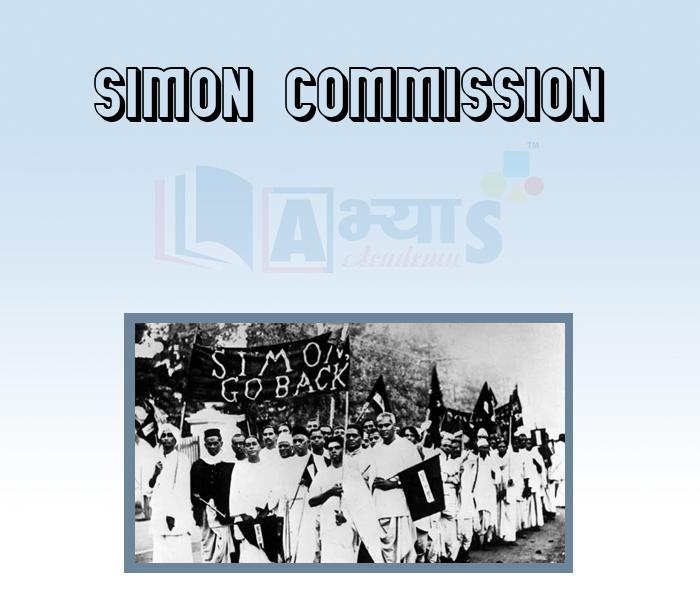Simon Commission











Simon Commission
Simon Commission: In 1927, the British (Lord Birkenhead was the Secretary of State) decided to appoint a commission to recommend further Constitutional reforms. The Indian protest was on the grounds that the commission headed by Sir John Simon was an "all white" commission Lord Birkenhead constantly talked of the inability of Indians to arrive at any consensus and that the British did not find any one from among the Indians fit enough to serve in a body that would make recommendation about India's political future. The commission's arrival in India led to a powerful protest movement in which nationalist enthusiasm and unity reached new heights. On 3rd February, the commission was greeted with hartals and black flag demonstrations. They could not carry with on with their coalition partners because of conflicting ideas.
The Indian Statutory Commission also known as Simon Commission, was a group of seven Members of Parliament under the chairmanship of Sir John Simon. The commission arrived in British India in 1928 to study constitutional reform in Britain's largest and most important possession. One of its members was the future leader of the Labour Party Clement Attlee, who became committed to self-government for India.
At the time of introducing of Montagu-Chelmsford Reforms in 1919, the British Government declared that a commission would be sent to India after ten years to examine the effects and operations of the constitutional reforms and to suggest more reforms for India.
The Simon commission arrived in British India in __________________ to study constitutional reform in Britain's largest and most important possession. | |||
| Right Option : B | |||
| View Explanation | |||
Which of the following are correct : (a) The Commission was strongly opposed by many Indians. It was opposed by Nehru, Gandhi, Jinnah, The Muslim League and Indian National Congress. (b) Lala Lajpat Rai suffered a police beating during the protest and died of his injuries on 17 November 1928. | |||
| Right Option : C | |||
| View Explanation | |||
Which of the following opposed the Simon Commission ? | |||
| Right Option : D | |||
| View Explanation | |||
Students / Parents Reviews [10]
Abhyas is a complete education Institute. Here extreme care is taken by teacher with the help of regular exam. Extra classes also conducted by the institute, if the student is weak.

Om Umang
10thA marvelous experience with Abhyas. I am glad to share that my ward has achieved more than enough at the Ambala ABHYAS centre. Years have passed on and more and more he has gained. May the centre flourish and develop day by day by the grace of God.

Archit Segal
7thAbhyas Methodology is very good. It is based on according to student and each child manages accordingly to its properly. Methodology has improved the abilities of students to shine them in future.

Manish Kumar
10thIt was good as the experience because as we had come here we had been improved in a such envirnment created here.Extra is taught which is beneficial for future.

Eshan Arora
8thMy experience was very good with Abhyas academy. I am studying here from 6th class and I am satisfied by its results in my life. I improved a lot here ahead of school syllabus.

Ayan Ghosh
8thIt has a great methodology. Students here can get analysis to their test quickly.We can learn easily through PPTs and the testing methods are good. We know that where we have to practice

Barkha Arora
10thI have spent a wonderful time in Abhyas academy. It has made my reasoning more apt, English more stronger and Maths an interesting subject for me. It has given me a habbit of self studying

Yatharthi Sharma
10thOne of the best institutes to develope a child interest in studies.Provides SST and English knowledge also unlike other institutes. Teachers are co operative and friendly online tests andPPT develope practical knowledge also.

Aman Kumar Shrivastava
10thIt was a good experience with Abhyas Academy. I even faced problems in starting but slowly and steadily overcomed. Especially reasoning classes helped me a lot.

Cheshta
10thBeing a parent, I saw my daughter improvement in her studies by seeing a good result in all day to day compititive exam TMO, NSO, IEO etc and as well as studies. I have got a fruitful result from my daughter.
